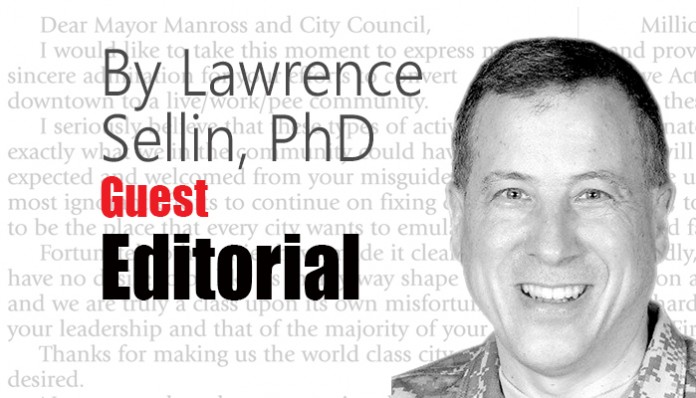Much has been made of the February 2013 article in Voyenno Promyshlennyy Kuryer by General Valery Gerasimov, Chief of Staff of the General Staff of the Russian Federation Armed Forces, describing Russia’s new “nonlinear” or “hybrid” approach to 21st century warfare now known as the Gerasimov Doctrine.
Gerasimov argued that there is a blurring divide between war and peace, in which there would be a concomitant blurring of lines between the different modes of war, which Frank Hoffman described as a “blend of the lethality of state conflict with the fanatical and protracted fervor of irregular war.”
In an effort to explain Russia’s annexation of Crimea and its invasion of Eastern Ukraine, many Western analysts have elevated the Gerasimov Doctrine to a “threatening precedent” or “even a likely model for future conflicts on Russia’s periphery.”
Or is it, in fact, “Russia’s attempt to catch up conceptually to the realities of modern war with which the United States has been grappling for over a decade in Iraq, Afghanistan, and elsewhere?”
Or is it simply old ideas in a new package?
It proves an ancient adage, which I just made up being a chronic skeptic, that politico-military analysts will embrace any novel concept, buzzword or acronym if it can generate articles, books and careers.
Non-linear and hybrid warfare can be compared to any number of irregular warfare paradigms such as Cold War Active Measures, unconventional, asymmetric or 4th generation.
Thousands of years ago SunTzu (The Art of War) wrote of defeating an enemy without fighting; during the Renaissance Niccolo Machiavelli (The Prince) spoke of limited war; and two hundred years ago Carl von Clausewitz (On War) recognized “people’s wars” (Landsturm) and political violence, components of modern guerilla warfare.
The Gerasimov Doctrine contains striking similarities to what the Chinese call Unrestricted Warfare (1999), which itself has: “historical roots in previous Russian doctrine” and “both strategies involve using proxies, or surrogates, to not only exploit vulnerabilities in low intensity conflict, but to also prepare for future operations, which may involve high intensity conflict.”
As described by authors Colonel Qiao Liang and Colonel Wang Xiangsui: “Unrestricted war is a war that surpasses all boundaries and restrictions. It takes nonmilitary forms and military forms and creates a war on many fronts. It is the war of the future.”
No, it is mostly warfare of the past fought with new technologies and targets, using non-traditional military forces sponsored by nation states.
As Max Boot noted in War Made New: Technology, Warfare, and the Course of History, 1500 to Today:
“Even non-state groups are increasingly gaining access to the kinds of weapons that were once the exclusive preserve of states.”
Russia’s strategic aims are largely unchanged since the time of Stalin: to achieve power parity with or dominance over the United States by dividing the West and leveraging alliances with other nations to further that effort; to retain the right to intervene and shape events in areas adjacent to its borders; to enforce non-interference in Russia’s internal affairs; and ultimately to make the 21st century the Russian Century.
The Gerasimov Doctrine, a geopolitical insurgency, provides the means.
Both traditional and non-traditional approaches must be applied to counter this “mixture of subversion, sabotage, political, economic, psychological actions and armed conflict,” which will be employed by Russia to achieve its aims.
After securing Sunni Iraq and fracturing the “Iranian crescent” of Iraq, Syria and Lebanon, why not make ISIS in Syria Russia’s problem?
Just a thought.
Lawrence Sellin, Ph.D. is a retired US Army Reserve colonel, a command and control subject matter expert, trained in Arabic and Kurdish, and a veteran of Afghanistan, northern Iraq and a humanitarian mission to West Africa. He receives email at [email protected].





